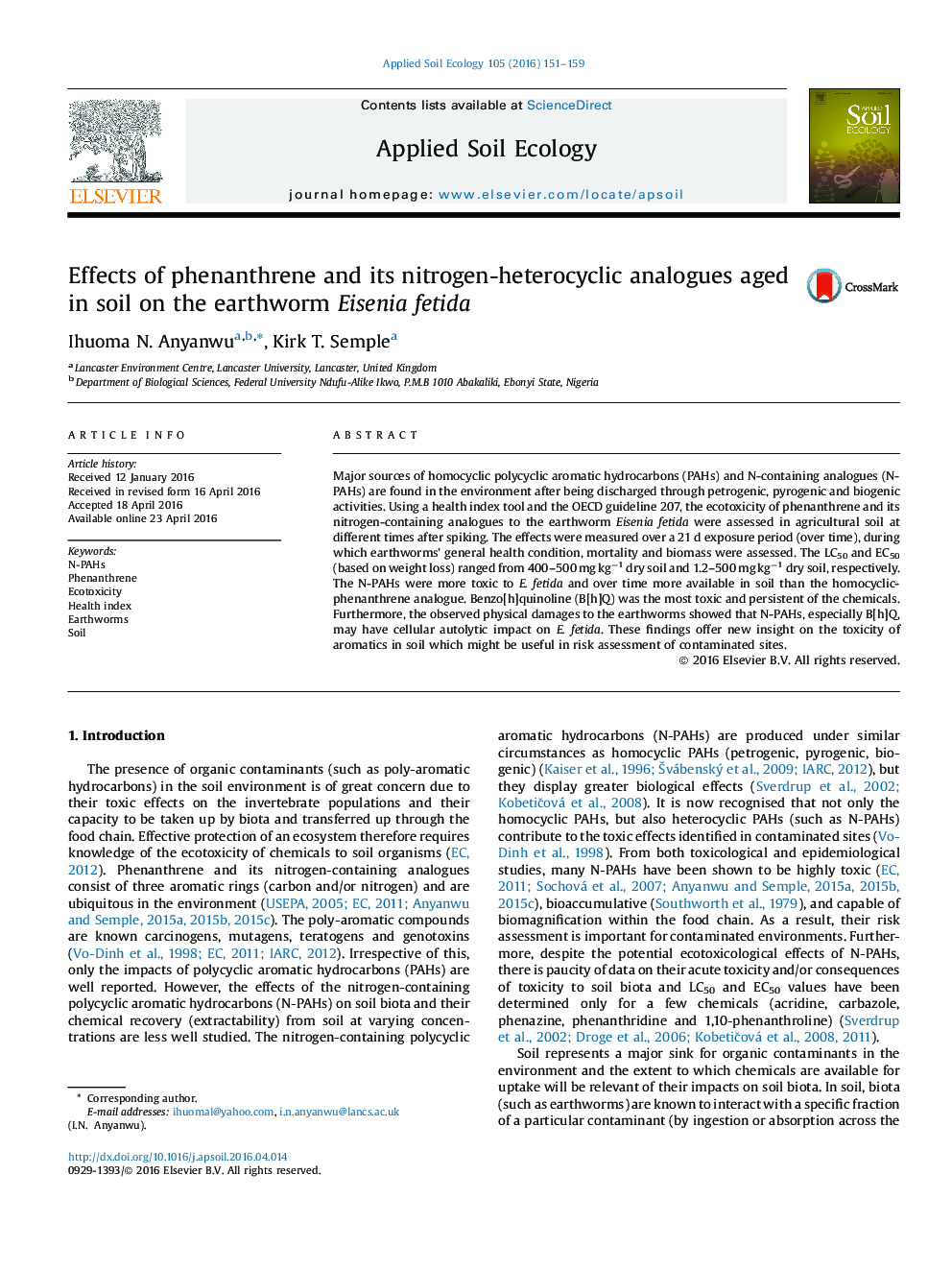| Article ID | Journal | Published Year | Pages | File Type |
|---|---|---|---|---|
| 6297763 | Applied Soil Ecology | 2016 | 9 Pages |
Abstract
Major sources of homocyclic polycyclic aromatic hydrocarbons (PAHs) and N-containing analogues (N-PAHs) are found in the environment after being discharged through petrogenic, pyrogenic and biogenic activities. Using a health index tool and the OECD guideline 207, the ecotoxicity of phenanthrene and its nitrogen-containing analogues to the earthworm Eisenia fetida were assessed in agricultural soil at different times after spiking. The effects were measured over a 21 d exposure period (over time), during which earthworms' general health condition, mortality and biomass were assessed. The LC50 and EC50 (based on weight loss) ranged from 400-500 mg kgâ1 dry soil and 1.2-500 mg kgâ1 dry soil, respectively. The N-PAHs were more toxic to E. fetida and over time more available in soil than the homocyclic-phenanthrene analogue. Benzo[h]quinoline (B[h]Q) was the most toxic and persistent of the chemicals. Furthermore, the observed physical damages to the earthworms showed that N-PAHs, especially B[h]Q, may have cellular autolytic impact on E. fetida. These findings offer new insight on the toxicity of aromatics in soil which might be useful in risk assessment of contaminated sites.
Related Topics
Life Sciences
Agricultural and Biological Sciences
Ecology, Evolution, Behavior and Systematics
Authors
Ihuoma N. Anyanwu, Kirk T. Semple,
